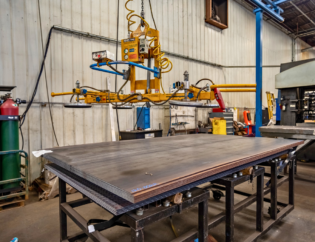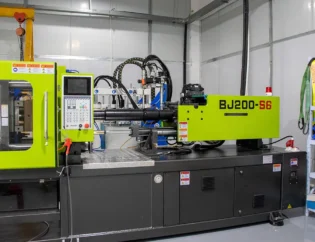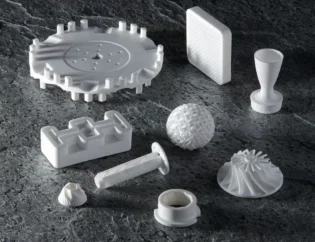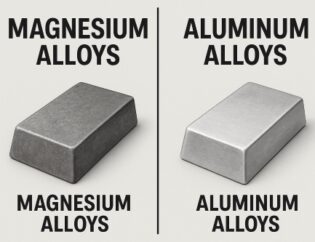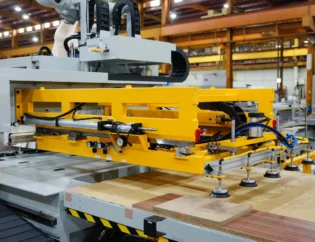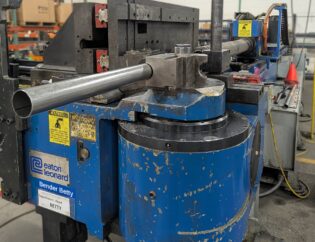CNC routers have revolutionized the manufacturing and crafting industries, offering precision and efficiency that traditional methods cannot match. Understanding the meaning and functionality of CNC routers is essential for anyone interested in woodworking, metalworking, or design. This guide will delve into the intricacies of CNC routers, exploring their components, operation, and applications.
Readers can expect to learn about the various types of CNC routers, their capabilities, and how they can enhance productivity. We will also cover essential terminology, helping demystify the technology for beginners and seasoned professionals alike. By the end of this guide, you will have a comprehensive understanding of CNC routers and their significance in modern fabrication processes.
All About CNC Routers: A Comprehensive Guide
In this world of automation and precision in manufacturing, CNC routers have become an integral part of the toolbox for creators and manufacturers. Whether it is an amateur DIY-er who loves creating complex designs, a hobbyist who enjoys experimenting with creative possibilities, or a professional looking for extreme precision, CNC routers are the perfect link between technology and utility. Contrary to old-fashioned manual tools, CNC routers have the unique capability of completing very complex repeated operations with extreme accuracy. But how do they work, and what is a CNC router in depth? Let’s dive in!
Understanding CNC Routers
A CNC router, or Computer Numerical Control router, is a versatile machine that automates the cutting, shaping, and engraving of various materials. It operates based on a set of digital instructions, allowing for high precision and repeatability in manufacturing processes. CNC routers are widely used in woodworking, metalworking, and various other industries.
Technical Features of CNC Routers
Here’s a comparison of key technical features of CNC routers:
| Feature | Description |
|---|---|
| Control System | Interprets G-code and directs the machine’s movements. |
| Spindle | Holds and rotates the cutting tool; speed can be adjusted for different materials. |
| Axes | Typically operates on three axes (X, Y, Z) for 3D cutting and engraving. |
| Drive System | Uses stepper or servo motors for precise movement. |
| Worktable | Provides a stable surface for material; can be vacuum or T-slot tables. |
| Tool Changer | Allows for automatic tool changes, enhancing efficiency. |
| Dust Collection | Systems to manage debris and maintain a clean workspace. |
Types of CNC Routers
CNC routers come in various types, each suited for different applications. Here’s a comparison of the main types:
| Type | Description |
|---|---|
| Standard CNC Router | Ideal for general woodworking and light materials; versatile and cost-effective. |
| Industrial CNC Router | Designed for heavy-duty operations; suitable for metal and hard materials. |
| Benchtop CNC Router | Compact and portable; perfect for hobbyists and small projects. |
| Laser CNC Router | Uses laser technology for cutting and engraving; excellent for detailed work. |
| Plasma CNC Router | Utilizes plasma cutting for metals; ideal for industrial applications. |
Applications of CNC Routers
CNC routers are used across various industries, including:
- Woodworking: Creating furniture, cabinetry, and intricate designs.
- Sign Making: Producing custom signs and promotional materials.
- Prototyping: Rapid production of prototypes for testing and development.
- Metalworking: Cutting and shaping metal components for various applications.
- Artistic Designs: Crafting unique pieces for artistic expression.
Advantages of CNC Routers
CNC routers offer numerous advantages, including:
– Precision: Achieve intricate designs with high accuracy.
– Efficiency: Automate processes to save time and reduce labor costs.
– Versatility: Work with a wide range of materials, from wood to metals.
– Consistency: Produce uniform results across multiple pieces.
Choosing the Right CNC Router
When selecting a CNC router, consider the following factors:
– Size and Working Area: Ensure the router fits your workspace and can handle the materials you plan to use.
– Spindle Power and Speed: Choose a router with adequate power for your specific applications.
– Control System and Software: Look for compatibility with your existing design software.
– Budget: Balance initial costs with long-term benefits and maintenance expenses.
Maintenance and Safety Tips
Regular maintenance is crucial for the longevity of CNC routers. Here are some tips:
– Routine Cleaning: Keep the machine free of dust and debris.
– Tool Inspection: Regularly check and replace dull or damaged tools.
– Safety Gear: Always wear appropriate personal protective equipment (PPE) when operating the machine.
Conclusion
CNC routers are essential tools in modern manufacturing, offering precision, efficiency, and versatility. Whether you are a hobbyist or a professional, understanding the features and types of CNC routers can help you make informed decisions. With proper maintenance and safety practices, these machines can significantly enhance your production capabilities.
FAQs
1. What materials can a CNC router cut?
CNC routers can cut a variety of materials, including wood, plastics, foam, and softer metals like aluminum.
2. How does a CNC router work?
A CNC router operates by following G-code instructions generated from CAD designs, allowing for precise cutting and shaping of materials.
3. What is the difference between a CNC router and a CNC mill?
CNC routers are typically used for softer materials and operate at higher speeds, while CNC mills are designed for harder materials and provide more torque for deep cuts.
4. How much does a CNC router cost?
Prices for CNC routers can range from a few thousand dollars for entry-level models to over $150,000 for industrial-grade machines.
5. How can I maintain my CNC router?
Regular maintenance includes cleaning, lubricating moving parts, and inspecting tools for wear to ensure optimal performance and longevity.


